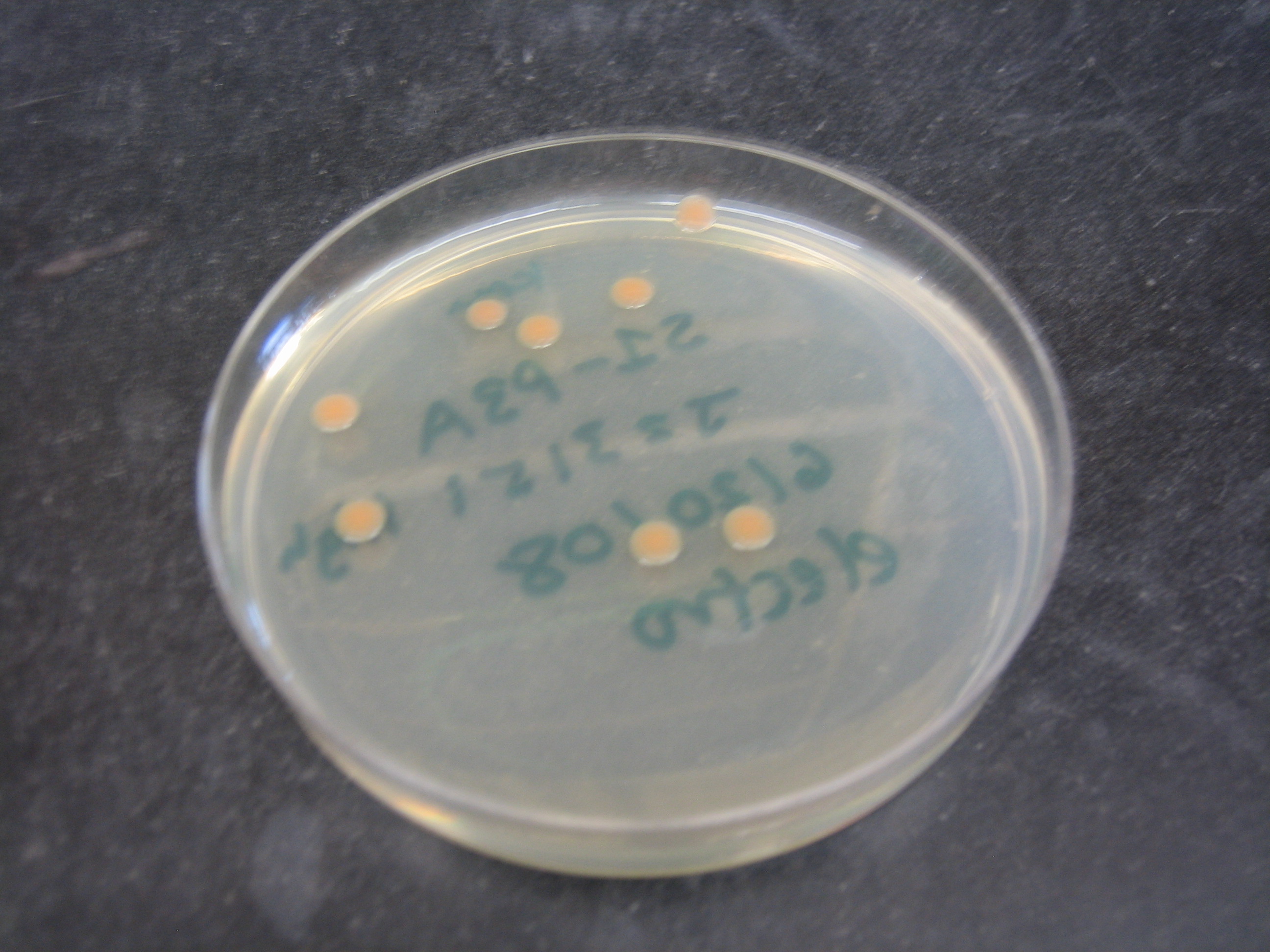Team:Harvard/Shewie
From 2008.igem.org
| Line 1: | Line 1: | ||
| + | {| | ||
| + | | align="center" style="background:#c4dbea"| | ||
| + | <br><br> | ||
| + | <html><a href = "https://2008.igem.org/Team:Harvard"><img src="https://static.igem.org/mediawiki/2008/b/b9/Harvard_logo.png"></a></html> | ||
| + | {| style="color:#1b2c8a;background-color:#FFF;" cellpadding="0" cellspacing="0" border="0" bordercolor="#000" width="100%" align="center" | ||
| + | <html> | ||
| + | <a href="https://2008.igem.org/Team:Harvard"><img src="https://static.igem.org/mediawiki/2008/a/a9/HHome2.jpg"></a> | ||
| + | <a href="https://2008.igem.org/Team:Harvard/Team"><img src="https://static.igem.org/mediawiki/2008/3/3e/HTeam1.jpg"></a> | ||
| + | <a href="https://2008.igem.org/Team:Harvard/Project"><img src="https://static.igem.org/mediawiki/2008/3/3c/HProject1.jpg"></a> | ||
| + | <a href="https://2008.igem.org/Team:Harvard/Shewie">The Organism</a> | ||
| + | <a href="https://2008.igem.org/Team:Harvard/Parts">The DNA</a> | ||
| + | <a href="https://2008.igem.org/Team:Harvard/Hardware">The Hardware</a> | ||
| + | <a href="https://2008.igem.org/Team:Harvard/Modeling"><img src="https://static.igem.org/mediawiki/2008/a/a2/HModelling1.jpg"></a> | ||
| + | <a href="https://2008.igem.org/Team:Harvard/Notebook"><img src="https://static.igem.org/mediawiki/2008/b/ba/HNotebook.jpg"></a> | ||
| + | <a href="https://2008.igem.org/Team:Harvard/Thanks">Acknowledgments</a> | ||
| + | <a href="https://2008.igem.org/Team:Harvard/References">References</a> | ||
| + | </html> | ||
| + | |||
| + | |||
| + | |} | ||
| + | <!--- body here---> | ||
| + | {|align="justify" style="background-color:#FFFFFF;text-indent: 15pt;text-align:justify" cellpadding="50" width="98%" | ||
| + | | | ||
| + | |||
==''Shewanella oneidensis MR-1''== | ==''Shewanella oneidensis MR-1''== | ||
| - | ''Shewanella oneidensis MR-1'' | + | This summer we worked with''Shewanella oneidensis MR-1'', a gram-negative facultative anaerobe (Myers and Myers 1997). Under anaerobic conditions, it reduces a number of electron acceptors such as MN(IV). This ability can be harnessed by microbial fuel cells (MFC) to produce an electric current (Bretschger et al. 2007). When the bacteria are grown anaerobically in the anode chamber of an MFC, they release electrons onto the electrode, creating an electrical current. These diverse respiratory capabilities require a complex electron transport systems, including 39 c-type cytochromes (Heidelberg et al. 2002). These interesting characteristics of ''S. oneidensis MR-1'' make it an important model organism for both studies of bioremediation as well as biotechnology applications. |
==Molecular Biology with <i>Shewanella oneidensis</i>== | ==Molecular Biology with <i>Shewanella oneidensis</i>== | ||
| Line 9: | Line 33: | ||
==Chassis and the Registry== | ==Chassis and the Registry== | ||
To facilitate easy manipulation in different organisms, it may be advantageous to standardize a specification sheet. Below, we provide a quick summary of ''S. oneidensis MR-1'' following what we think may be a suitable format. Since iGEM teams frequently work with species other than ''E. coli'', if only to clone some interesting gene product, a set of such sheets could be built up to facilitate synthetic biology in a more diverse set of organisms. | To facilitate easy manipulation in different organisms, it may be advantageous to standardize a specification sheet. Below, we provide a quick summary of ''S. oneidensis MR-1'' following what we think may be a suitable format. Since iGEM teams frequently work with species other than ''E. coli'', if only to clone some interesting gene product, a set of such sheets could be built up to facilitate synthetic biology in a more diverse set of organisms. | ||
| + | |} | ||
| + | <br><br> | ||
| + | <!--- end body ---> | ||
| + | |} | ||
Revision as of 19:12, 28 October 2008
|
 "
"






